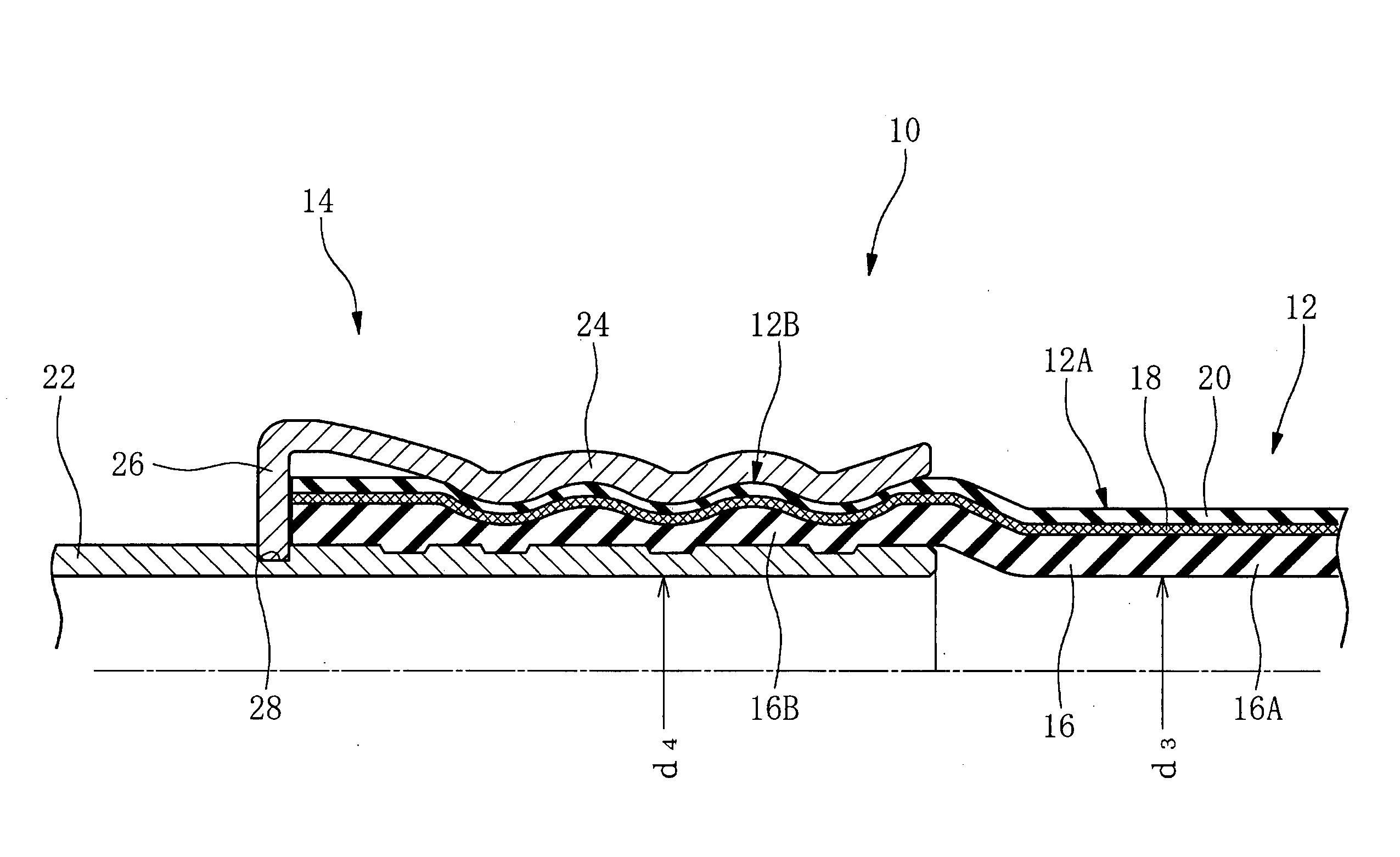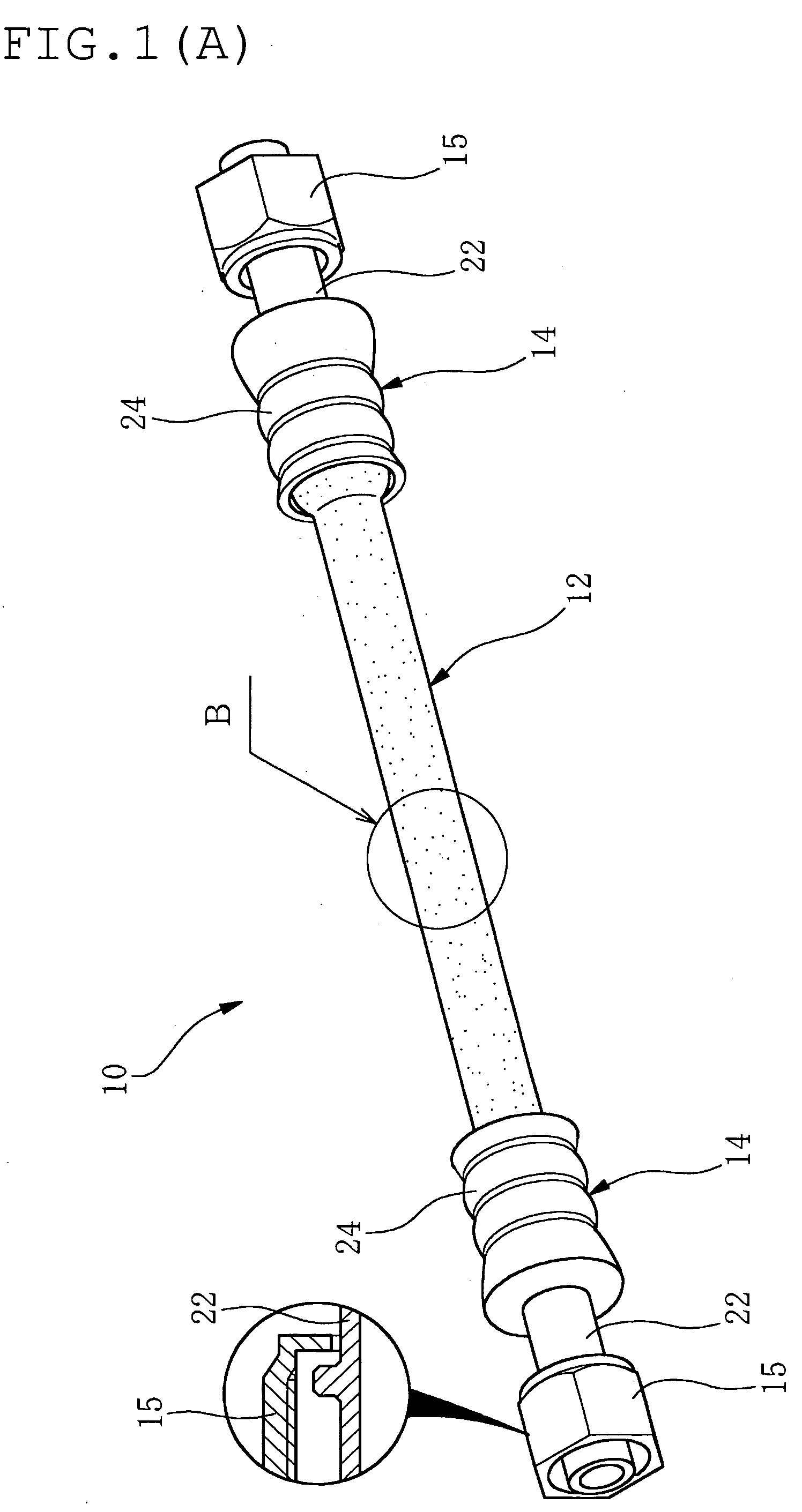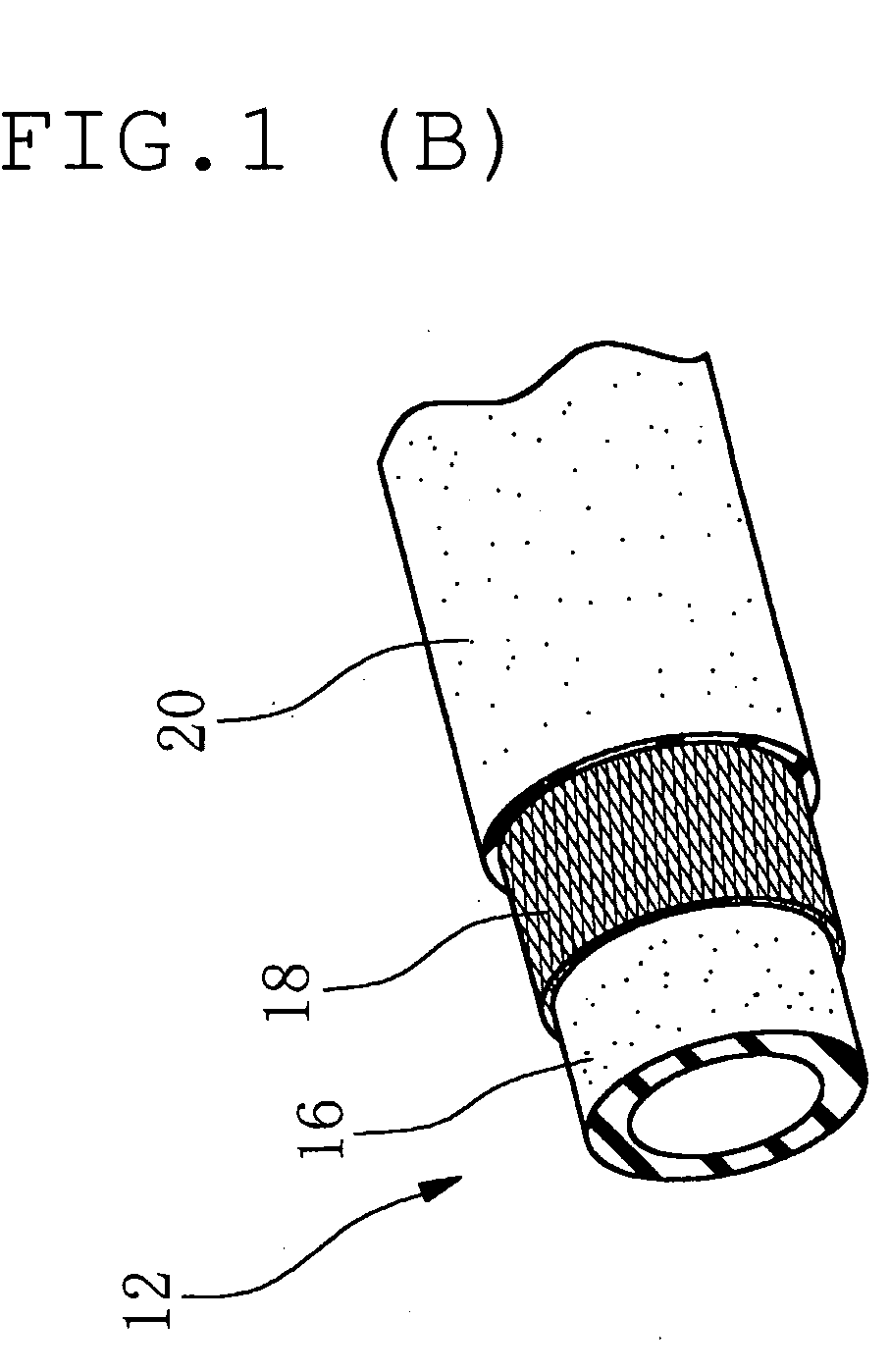Pressure resistant vibration absorbing hose
- Summary
- Abstract
- Description
- Claims
- Application Information
AI Technical Summary
Benefits of technology
Problems solved by technology
Method used
Image
Examples
example
[0099] Some example and comparison example hoses are formed having different constructions as shown in Table 1, and evaluated with respect to vibration 15 absorbing property, refrigerant permeability, water permeability, bursting pressure at high temperature and bursting pressure at room temperature (RT), respectively. The results are shown in Table 1.
TABLE 1Examples123MainDimensionInner diameter9.09.09.0portionOuter diameter15.513.513.1Inner surfaceMaterialC1-IIRC1-IIRC1-IIRlayerWall thickness (t1)2.01.00.8ReinforcingMaterialPETPETPETlayerNo. of denier1000 de1000 de1000 deNo. of yarns3 yarns × 482 yarns × 482 yarns × 48carrierscarrierscarriersBraid density (%)837174Outer surfaceMaterialEPMEPMEPMlayerWall thickness0.750.750.75DimensionInner diameter12.012.012.0Outer diameter18.416.816.8SwagedInner surfaceWall thickness2.01.31.3portionlayer(t2)Outer surfaceWall thickness0.70.60.6layerRelationship between t1 and t2t1 = t2t1 2t1 2Free length of hose (length of main portion)150 mm150 ...
PUM
| Property | Measurement | Unit |
|---|---|---|
| Fraction | aaaaa | aaaaa |
| Pressure | aaaaa | aaaaa |
| Temperature | aaaaa | aaaaa |
Abstract
Description
Claims
Application Information
 Login to View More
Login to View More - R&D
- Intellectual Property
- Life Sciences
- Materials
- Tech Scout
- Unparalleled Data Quality
- Higher Quality Content
- 60% Fewer Hallucinations
Browse by: Latest US Patents, China's latest patents, Technical Efficacy Thesaurus, Application Domain, Technology Topic, Popular Technical Reports.
© 2025 PatSnap. All rights reserved.Legal|Privacy policy|Modern Slavery Act Transparency Statement|Sitemap|About US| Contact US: help@patsnap.com



